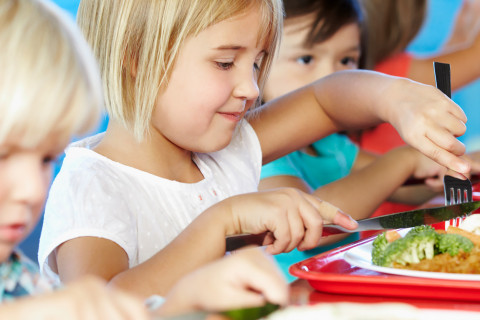Barely one in ten primary school children eat a balanced lunch in school, according to a study by the Tasty School project. Schools that invested in food education were able to achieve a significant change in just one school year.
“Earlier studies, too, show that school children’s dietary habits are not in line with the dietary recommendations. Vegetables in particular are eaten much less than recommended. The majority of primary school children attend school lunch, but few eat all the components that make up a balanced meal,” Postdoctoral Researcher Tanja Tilles-Tirkkonen said in a seminar organised by the Tasty School project in early September.
In the school year 2019–2020, 15 intervention schools and 10 control schools in the Finnish cities of Kuopio, Sotkamo, Salo, Järvenpää and Siilinjärvi participated in a study exploring how well-suited the Tasty School’s model of food education for the everyday life of schools is, and what its effects on school children’s eating habits are. Preliminary findings from the study were presented in the seminar.
Nice, but too noisy lunchtime
According to a survey completed among school children at the beginning of the study, less than 10% ate a balanced school lunch every day. A balanced school lunch is comprised of the main course, a side salad with dressing, bread and spread, and a milk drink. The use of salad dressing was not taken into account in the results.
Approximately 70% of school children regarded lunchtime as a pleasant moment, and even more considered school lunch to be healthy.
“However, only 30% found the dining room peaceful and not too noisy. Indeed, the soundscape was surprisingly often highlighted as something that should be improved,” Project Researcher Amma Antikainen said.
The majority of teachers felt that schools and teachers play an important role in food education.
“Time in particular, but also financial resources and resources relating to facilities, pose challenges to food education.”
The schools participating in the intervention selected their goals of, and tools for, developing food education independently. As a source of support, they had access to a vast bank of ideas and an online course available on the Tasty School website.
“Our goal was for each teacher to realise at least one food education idea with their class every month, and to complete our three-hour online training,” Project Researcher Aija Laitinen said.
Plate model pass inspired children to eat salad
Few teachers had time to give the desired 30 minutes of food education per month, and the online course was completed by only half of them. Yet, positive changes could be seen especially in schools that got the entire school community involved in food education.
“In these schools, the principal took an active role and all teachers were committed to the agreed practices. The schools collaborated with their caterer, school meals were actively developed, and the schools also organised some sort of event that was common to school children of all ages.”
“The share of school children eating a balanced lunch grew the most in these schools: from 10.4% to 16.4%. An increasing number of school children also felt that they could influence school meals.”
Out of the intervention schools’ teachers who responded to the survey, 99% considered the Tasty School model to be suitable for the school environment, and 80% of these schools had plans to continue implementing the model. Examples of good practices included sample lunch portions and a plate model pass, which even got children competing in who could eat most salad. The consumption of vegetables was also increased by making the different components of a salad separately available. In addition, tasting classes and peaceful lunchtimes were held in high regard in the schools. Tax benefits were also made available to the teachers.
Food for thought from assessing the current state
According to Tilles-Tirkkonen, the realisation of the nutrition recommendations in schools is on the agenda of many municipalities’ work to promote health and well-being, but the related development requires indicators.
“The tool developed in this project for the assessment of school meals and food education serves as a foundation for planning food education measures and also enables comparisons between different schools and different municipalities.”
The Tasty School model has been developed in collaboration between experts from the Finnish Society for Food Education Ruukku, the University of Eastern Finland and the pilot schools. The Finnish Ministry of Social Affairs and Health has supported the project from an appropriation reserved for health promotion.
“Food education constitutes part of the national core curriculum, but it is not really included in primary school teachers’ education, and there is variation in how food education is implemented in schools. The Tasty School model, which research has shown to work, and a selection of materials produced in earlier projects, can now be easily found in one place,” Project Manager Silja Varjonen from the Finnish Society for Food Education Ruukku says.
Tasty School website: https://maistuvakoulu.fi/en/

